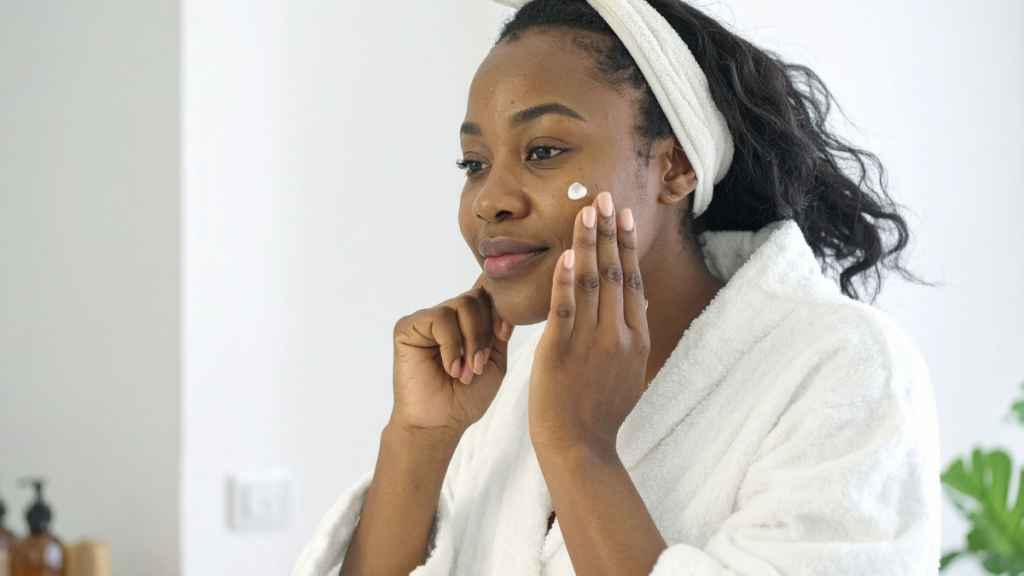Summary
This guide helps Canadians adjust their skincare for winter. It covers simple swaps like replacing lightweight gels with richer creams, adding barrier-supporting ingredients such as hyaluronic acid, ceramides, and niacinamide, and maintaining SPF protection. Tips on lifestyle adjustments and managing active treatments ensure skin stays healthy, hydrated, and resilient during cold, dry months.
As temperatures fall and indoor heating kicks in, your skin’s needs shift, sometimes dramatically. The lightweight gels and daily acids that kept you matte in July can start leaving your face tight, flaky, and irritated by December.
Here’s a practical guide for what to swap, what to add, and what to keep (yes, SPF included) so you can move into winter without sacrificing glow or skin health.
The Winter Problem: Why Skin Dries Out
Cold outdoor air holds far less moisture than warm air, and indoor heating compounds the effect by removing humidity from rooms. The result: increased transepidermal water loss (TEWL), (your skin’s moisture literally evaporates faster) and a weakened skin barrier, which can lead to tightness, flaking, redness and sensitivity.
In simple terms, TEWL is the natural process that our skin uses to regulate its water content. It’s the amount of water that passively evaporates through the skin, and too much of it means that your skin will suffer.
Dermatologists recommend focusing first on repairing and protecting that barrier rather than aggressively treating texture or oiliness.
Quick Winter Skincare Routine: What To Swap & Add
What To Swap (Simple, Actionable Swaps)
- Replace lightweight gel moisturizers with richer creams or ointments at night. Thicker formulations with occlusive ingredients (petrolatum, dimethicone) help seal in moisture.
- Cut back on frequent use of exfoliating acids (AHAs/BHAs) and retinoids during the coldest months. Use them less often or at lower concentrations to avoid stripping the barrier.
- Stay with gentle, hydrating cleansers rather than foaming/stripping formulas. Shorter, lukewarm showers lock in more moisture than hot, long ones.
What To Add (Ingredients That Actually Help)
- Hyaluronic acid: helps maintain the skin’s moisture levels and firms, soothes, and plumps the skin.
- Ceramides: they make up about 50% of the skin’s lipids that restore the skin barrier and reduce water loss.
- Niacinamide: reduces redness, balances oil, and supports barrier repair, safe to include with most winter regimens.
SPF: Don’t Put It Away
Even though the UV Index tends to be low during Canadian winters, outdoor activities like skiing or snowshoeing can significantly increase your exposure. Bright, reflective surfaces such as snow can nearly double the amount of UV radiation that reaches your skin, and higher elevations mean even stronger UV rays. That’s why sun protection remains essential year-round, even on cloudy, cold days.
Health Canada recommends applying a broad-spectrum sunscreen with an SPF of at least 30 whenever the UV Index is 3 or higher, and don’t forget often-missed spots like your lips, ears, and hands, any area exposed to the sun.
Lifestyle And Environment (Small Changes, Big Effects)
- Stay hydrated: Drinking enough water supports your skin’s natural moisture balance, especially when indoor heating and dry winter air pull moisture from the skin.
- Add a humidifier: restoring indoor humidity to ~30–50% can dramatically reduce skin dehydration.
- Heat gently: lower radiator or forced-air temps when possible and avoid placing beds or chairs directly near vents.
- Protect exposed skin: gloves, scarves and barrier creams for hands and lips help prevent chapping and fissures.
When To Keep (Or Pause) Active Treatments
If you use acne or anti-aging actives, winter is the time to go slow. Many dermatologists recommend minimizing products with ingredients like glycolic acid, salicylic acid, or retinol during the colder months, since dry air can make skin more sensitive.
It’s best to use them less often or at a lower concentration. If your skin feels tight, flaky, or irritated, scale back further, and instead of stopping and restarting on your own, check in with a dermatologist. They can guide a short, supervised taper to help maintain your results while reducing side effects.
Quick Winter Skincare Routine (Morning → Night)
Morning
- Gentle hydrating cleanser
- Lightweight serum with hyaluronic acid or niacinamide
- Rich moisturizer with ceramides
- Broad-spectrum SPF 30+ (apply to face, neck, and exposed hands)
Night
- Gentle cleanser (or cleansing balm if you wear makeup)
- Targeted serum (niacinamide / hyaluronic acid)
- Thicker cream or ointment to lock moisture in
- Use retinoids or acids 1–3 times a week only if skin tolerates it
Taking care of your skin isn’t just about beauty, it’s also a protective organ that needs TLC. Treating the barrier kindly during Canadian winters pays off in comfort, fewer flare-ups, and better long-term skin health. With small, evidence-based swaps and a daily SPF habit, you can go from flaky and reactive to comfortable and resilient all season long.
~ Read more from The Health Insider ~
- Beyond the Cane: The 5 Top Mobility Devices for Independence and Faster Rehab
 Tired of tripping? Discover the 5 essential devices that help retrain your stride—from high-tech AFOs to stable rollators.
Tired of tripping? Discover the 5 essential devices that help retrain your stride—from high-tech AFOs to stable rollators. - Canadian Cancer Clinical Trials Database Launched for Doctors and Patients
 SummaryA new national database, Cancer Trials Canada, has been launched by the Canadian Cancer Society and Q-CROC to give both patients and physicians easy access to every adult cancer clinical trial in Canada. The platform replaces the increasingly unreliable U.S. registry and offers verified, regularly updated listings filtered by cancer type, stage, and eligibility. Designed…
SummaryA new national database, Cancer Trials Canada, has been launched by the Canadian Cancer Society and Q-CROC to give both patients and physicians easy access to every adult cancer clinical trial in Canada. The platform replaces the increasingly unreliable U.S. registry and offers verified, regularly updated listings filtered by cancer type, stage, and eligibility. Designed… - A New Fit for Health: The Smart Bra Aiming to Revolutionize Breast Cancer Detection
 Meet Dr. Van Houten’s smart bra: a low-cost, comfortable, no-x-ray system that detects cancer by monitoring breast tissue movement and stiffness.
Meet Dr. Van Houten’s smart bra: a low-cost, comfortable, no-x-ray system that detects cancer by monitoring breast tissue movement and stiffness. - Eat Your Way to a Healthier Heart with a Metabolic Coach
 From balancing blood sugar to reducing inflammation, Certified Metabolic Coaches help you use food as medicine for your heart and overall wellbeing.
From balancing blood sugar to reducing inflammation, Certified Metabolic Coaches help you use food as medicine for your heart and overall wellbeing. - What to Do if You’re Experiencing Hearing Loss in Canada: A Step-by-Step Patient Resource Guide
 Our guide to hearing care in Canada. Get a province-by-province breakdown of government funding programs for hearing aids for seniors and all residents.
Our guide to hearing care in Canada. Get a province-by-province breakdown of government funding programs for hearing aids for seniors and all residents. - Diabetes and Vision: Why Early and Regular Eye Exams Can Save Your Sight
 A new survey finds most Canadians unaware that diabetes can damage vision. Early diagnosis could prevent up to 90% of sight loss.
A new survey finds most Canadians unaware that diabetes can damage vision. Early diagnosis could prevent up to 90% of sight loss.
The information provided on TheHealthInsider.ca is for educational purposes only and does not substitute for professional medical advice. TheHealthInsider.ca advises consulting a medical professional or healthcare provider when seeking medical advice, diagnoses, or treatment. To read about our editorial review process click here.
